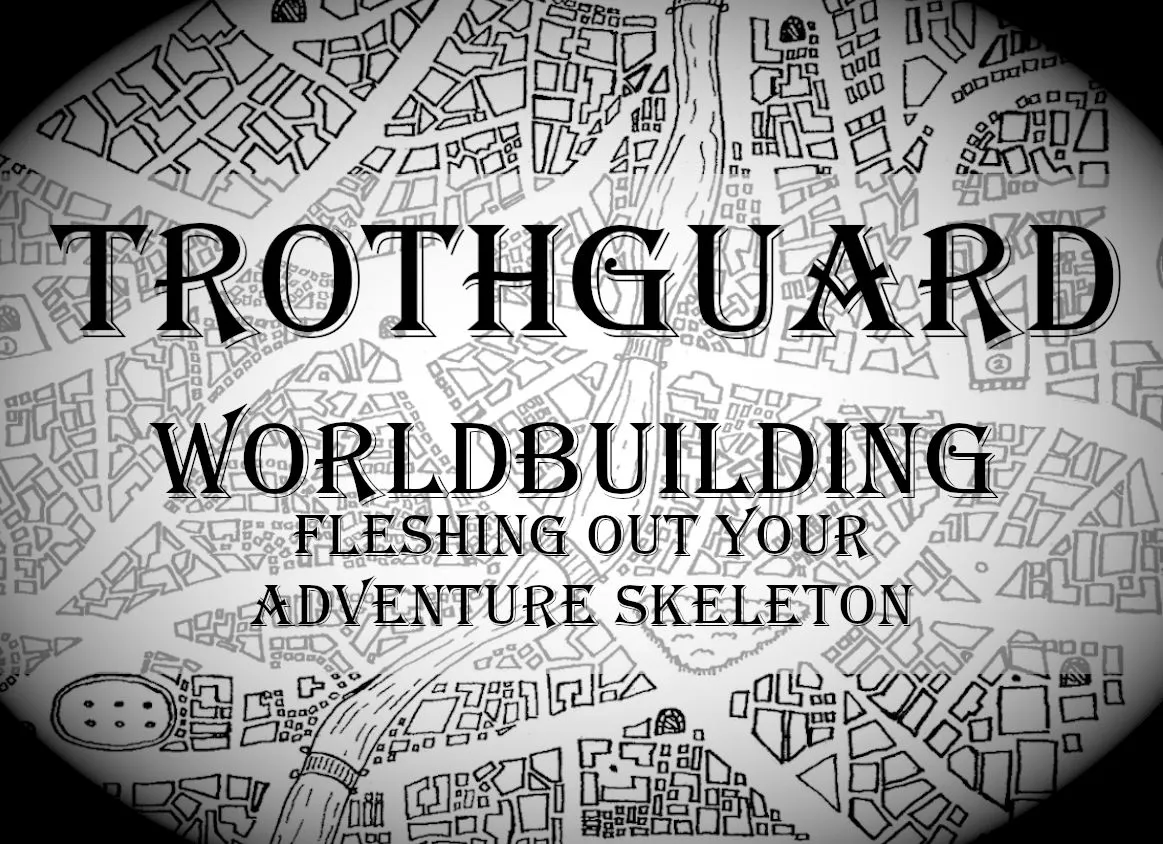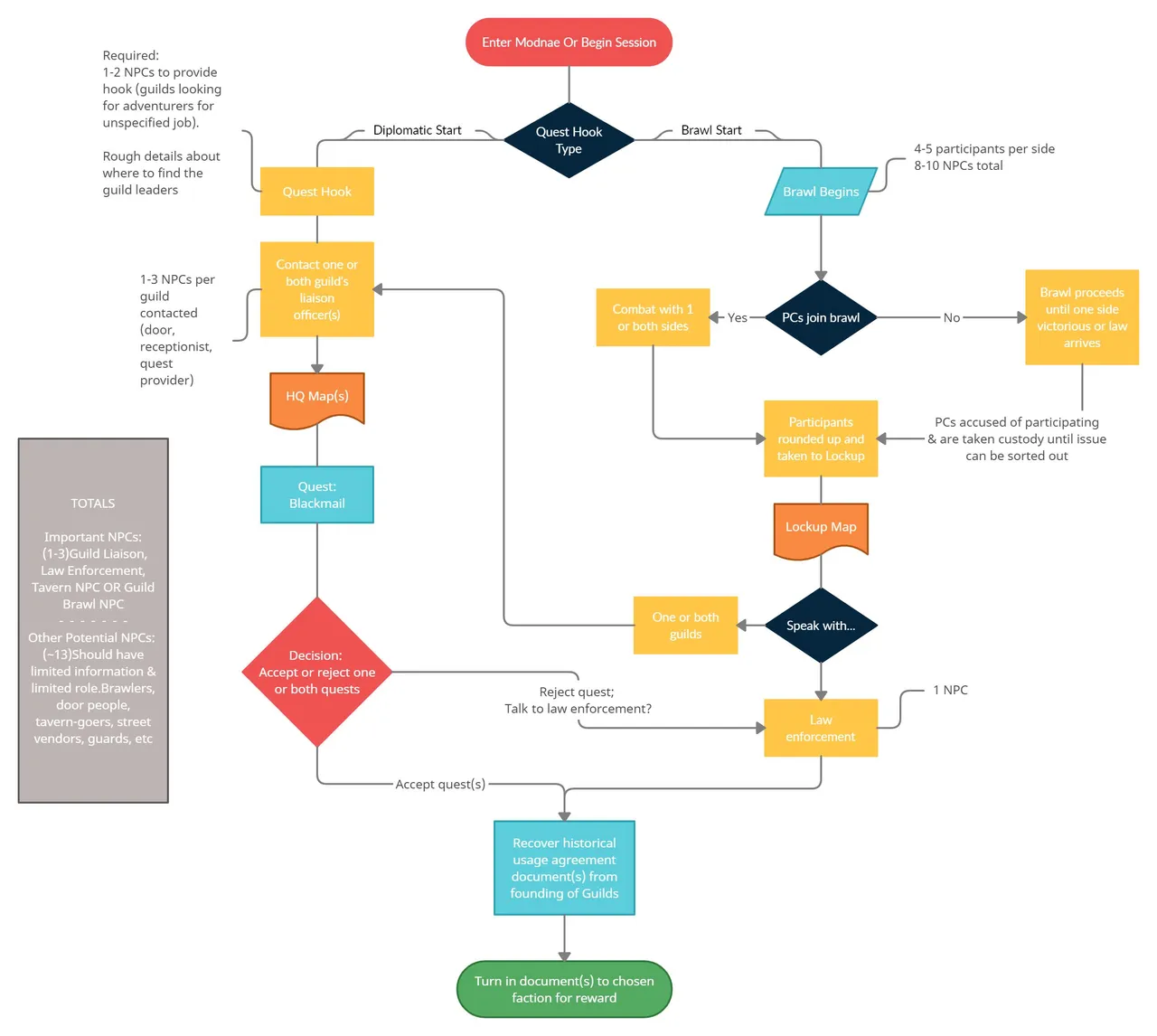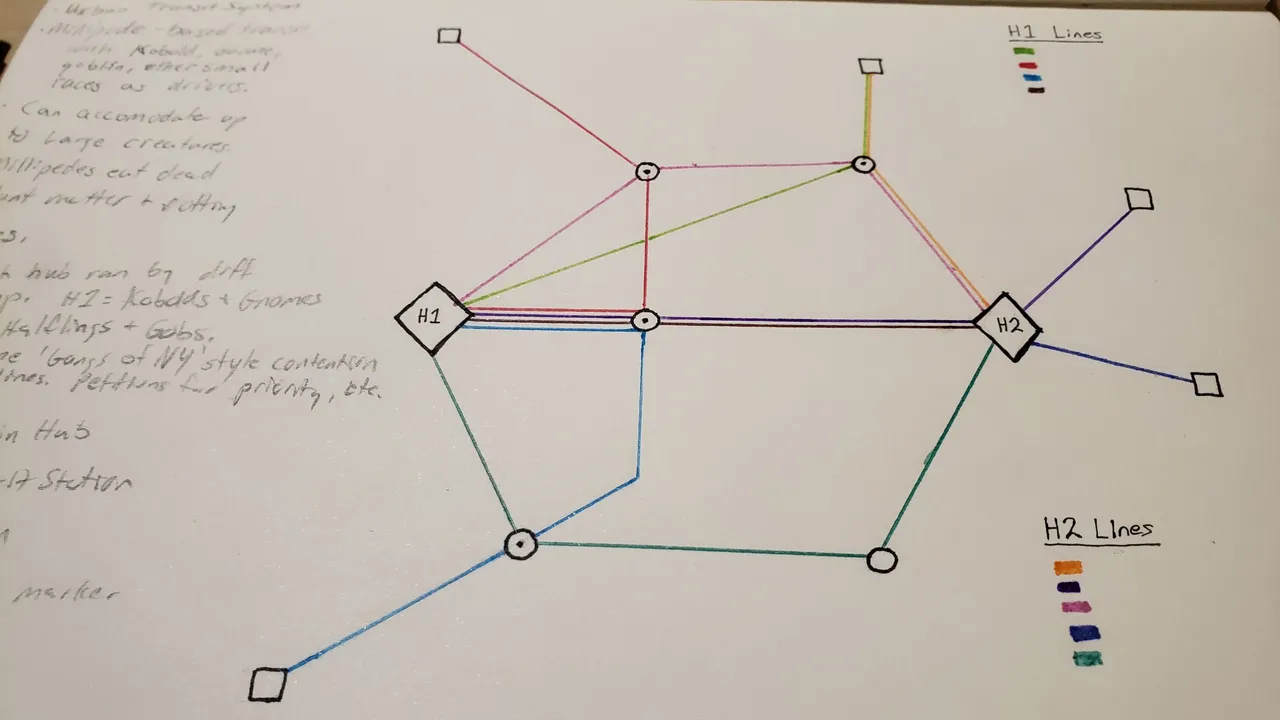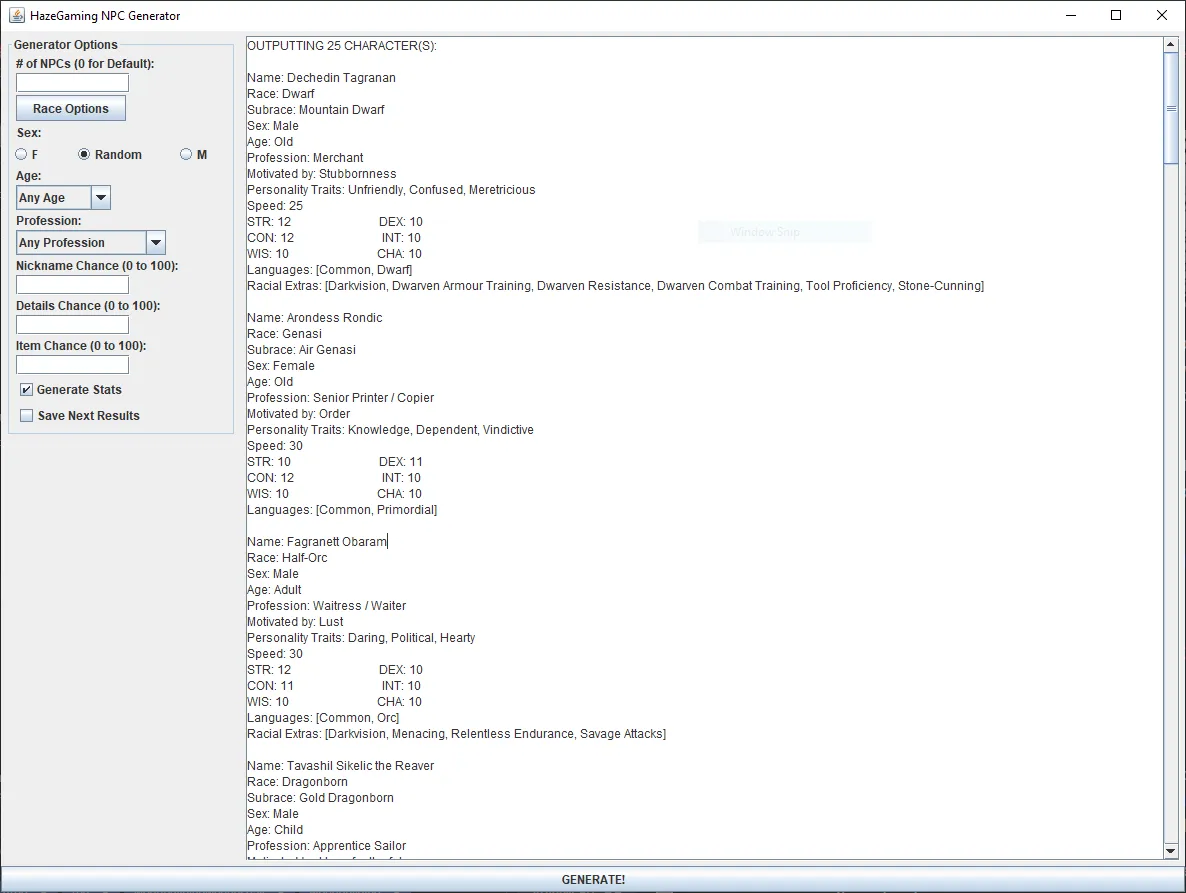
Welcome to today's #WorldbuildingWednesday post! For those of you new to this series, I'm @oblivioncubed. In this series of posts, I break down what Worldbuilding means to me, how I build a setting, why I choose to build what I do, and hopefully provide you some inspiration to use in your Worldbuilding.
My world - Trothguard - is a setting I've created as a catch-all location for any tabletop RPG games I run, so everything I build is filtered through a lens of 'how will this improve the game for myself and my players?'.
Today we're going to Flesh out our Adventure! Which should leave us with a complete adventure that would be ready for play.

Fleshing out your Adventure
Last time we discussed how to take our Adventure Hook and turn that into the skeleton framework for an Adventure. In that post, we established our generalized setting, the adventure catalyst, our desired challenge/encounter, and an idea for what kind of reward to hand out.
Today, our goal is to finalize some details and get ourselves to a place where we'd feel comfortable running this adventure as a session.
Now, that said, it is important to note that everything that follows is going to be what works for me. I like to build most of my content in such a way that it's viable to play at really just about any level, so things like well-defined stat blocks and exact rewards - you're probably not going to see here. I prefer to scale those to fit the level my players are at in my prep before a session starts so that I'm less likely to feel like my players have to visit certain places at certain times.
For me, once I have completed my adventure framework (which we covered in the last blog), my next real step is to extrapolate those points into smaller, more well-defined, sub-points or tasks. Usually, just by taking this step, I'm able to answer some of the lingering questions that weren't covered in the top-level overview.
You can do this however works for you, but what works best for me is to jot down a quick flow-chart to visualize how everything fits together. I would generally just do this quick and dirty on a piece of loose-leaf paper with a pencil, but since I want to show you folks something presentable, I opted to create something a bit nicer:

Because I knew that this questline could potentially have two different ways to start, I wanted to include both in my plans so that I don't have to assume anything about what the players will or won't do. All I need is for them to either enter the city of Modnae, or to have the current session begin with the players already in the city. Most of this flow chart works like an 'if-then-else' statement.
Diplomatic Path
If the players reached the city at the end of a previous session and were already at an inn or tavern or something, we can dangle the Diplomatic start, by having the owner mention something about one or both of the guilds wanting to hire some adventurers for an unspecified job.
In this starting, it's important that whomever they're talking to has pretty limited knowledge and is mostly just wanting to pass them on to a guildmember or directly to the guild liaison officer for more details. As such, they should have some knowledge of where to find the office(s) of the guild(s) and maybe a description of who to ask for.
Assuming they follow this path, we need at least one, but possibly two, maps for each guild's headquarters. There are tons of maps of generic fantasy offices that you could snag for free online, or you could use a service like Inkarnate or DungeonScrawl to create exactly what you want, or you could even just draw it by hand if you have the time and desire.
When they get to their destination, they should be escorted to the Guild Liaison Officer. This is going to be the NPC who informs them that the job is to get their hands on the other guild's Tunnel Usage Agreement dating back to the founding of the twin guilds. Whichever guild doesn't have their copy of the agreement is at a steep disadvantage when trying to prove their claim of tunnel priority, and since this is definitely not a legal job, it's being outsourced to adventurers.
At this point, the players have a choice. Take the job, or reject the job. A third option is to talk to the other guild, but that should just end up as another way to point to the two available options from here: Talk to local law enforcement, OR, take the job.
If they talk to law enforcement, they're basically going to be told to accept the job and complete it as part of a Sting, so that the issue of tunnel priority can be put to rest once and for all.
Either way, the players are going to have to bribe, steal, or murder their way to those documents... Unless they come up with some other solution to bring both guilds to the table and solve their problems. Just because it's not part of my plans, doesn't mean it can't be done. This is the Diplomatic Path, after all.
Brawl Path
In this starting path, we want to thrust the players directly into action. We direct them to one of the potential conflict zones, and then we just let a street brawl unfold around them and see what they do.
If they join in and start fighting one or both sides, law enforcement arrives after a bit of combat and rounds them up to be taken to lockup. If they don't participate, we can narrate a bit of combat and then have law enforcement take them to lockup anyhow after they're accused of instigating or participating in the brawl. Either way, they're rounded up until their involvement can be properly sorted out.
So, given that they're headed towards what is essentially the fantasy version of a drunk-tank, we're going to need a map of the lockup. Same as with the guild headquarters, this is something you can easily find or make.
Within the lockup, they have the option to speak to guild members from both sides of the conflict as well as law enforcement. As the DM, it's up to you to judge who they seem most interested in. If they side with one of the guilds (or are sympathetic to both), we're going to treat them the same as we'd treat our tavern owner NPC in the diplomatic start, and we'll have them point to the Guild Liaison Officer.
If they decide to favor law enforcement, we're going to have the players essentially be given a job to recover the same documents that the guild wants and instead turn them in to the law. As with the Diplomatic option, if the PCs think of some other way to do this, I'd let them... though if their solution is 'wipe out one of the guilds' for example, they'd end up spending their next session doing a jailbreak and likely fleeing the city. Consequences can be fun too.
So there we have it! A pretty good idea of how we want our adventure to go, visually represented as a flow chart, and that provides us an idea of what else we need.
Prep Work
At maximum, we need a map for each of the headquarters, a battle map of the tunnels for the brawl, and a map of the lockup. We also need a bunch of generic NPCs and up to 3 "important" NPCs.
I also find that I like to have a DM map of the city showing where things are for my own reference, like this:

Which I created by referencing our original Transit Map to see where there could be high congestion on shared lines:

Thanks to our existing worldbuilding we have a pretty good idea of what's going on in the city, which is a huge advantage of building your own adventures in your own world. I don't need boxed text or descriptive text explaining what's happening in the city because I know what the city's culture is like and I know what's happening. I can freely describe the farmers market festival and just base that on-street festivals I have been to IRL.
All I really need now is a bunch of NPCs... Which for me is super easy, because I built a program just to spit out random NPCs for me (since I hate making them myself).

I like spitting out something like 25 of them and just ignoring the job and age fields since what I mostly care about is names, motivations, and personalities in cases like these. For the brawlers on either side I'll include pre-generated stat blocks just in case I decide to use them, and if I were to generate for this city I'd probably limit my race choices to humans, goblins, kobolds, halflings, and gnomes for the majority of the NPCs. I may sprinkle in some dwarves or others, but they'd be far less common than we see in my example output above. Also, because I tend to prefer physical copies of things, I usually print these lists out and as I use each NPC I jot some notes down. This ensures I can remember important things after the session.
With all this decided and prepared, I have a fully playable adventure ready to go!
As mentioned, your mileage with this may vary. My work is definitely tailored to how my brain works and I wouldn't ever call it worthy of publishing as an adventure that can be ran by most folks. At least, not in this state.
There's also a lot of room for flexibility in this adventure. If it was seeming like the players were really enjoying the brawl for example and I wanted to add an optional section - I could always have one of the giant centipedes get panicked. I could then, if I really wanted to, have it cause a cave-in and trap a bunch of people (players included) below-ground... which would mean that I've actually used 3 of the 4 adventure hooks we originally plotted and could stretch this out for a few sessions.
Or, because players love to do this to us, we could end up scrapping 90% of the adventure and instead do something totally unexpected related to the visiting dignitary from Esphar. I wouldn't have maps prepared for that, but hey - sometimes you end up doing shit on the fly and that's okay. The point is to have an idea of what you'd like to do and to have enough comfort with your setting that if it goes totally sideways you can just roll with it.
If you prefer more professional and structured content that you don't have to make, there are tons of great folks out there making adventures. CrumblingKeep and Elven Tower are two of my personal favorites, and I definitely recommend checking them out to see how proper adventures are made. They're great folks and have a ton of free content that really would be worth paying for.
One last mention, because I believe in always being prepared for random trips to shops and inns, I constantly keep a printout of the WalrockHomebrew 'Traders and Merchants' pdf handy (which you can get here) so I have readily available shop inventories without having to really prep these at all.

Thank you for reading today's #WorldbuildingWednesday! I hope this has provided you with some inspiration!
If there's something else you'd like to ask me about, please do so! I will make every effort to answer it next Wednesday.

Join the Worldbuilding Community!